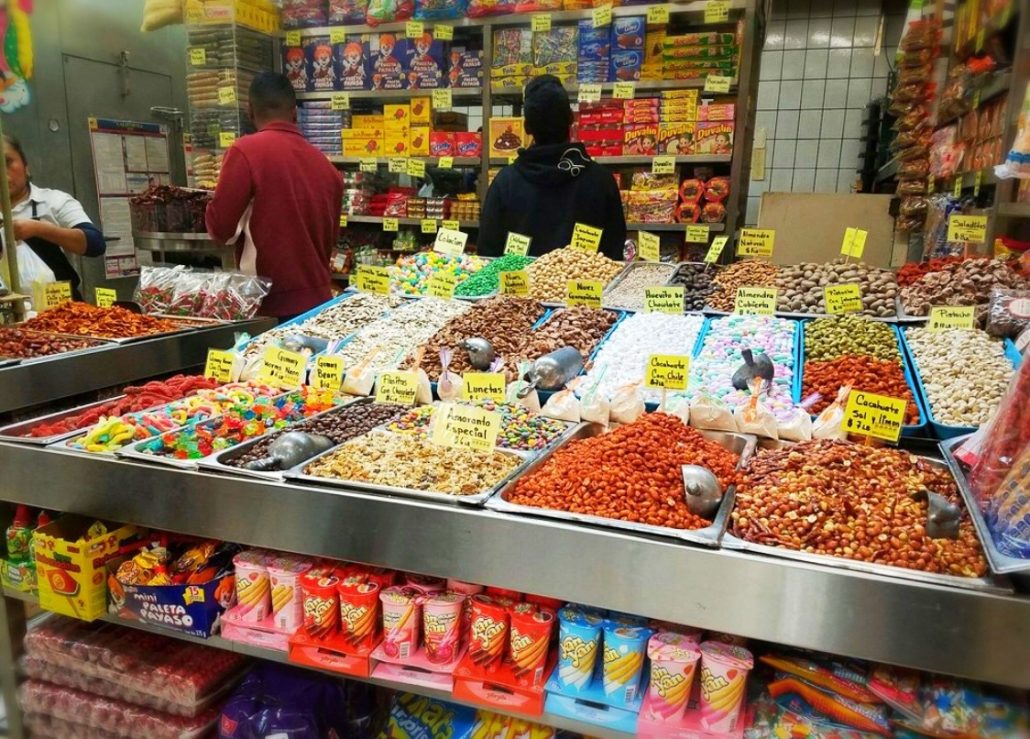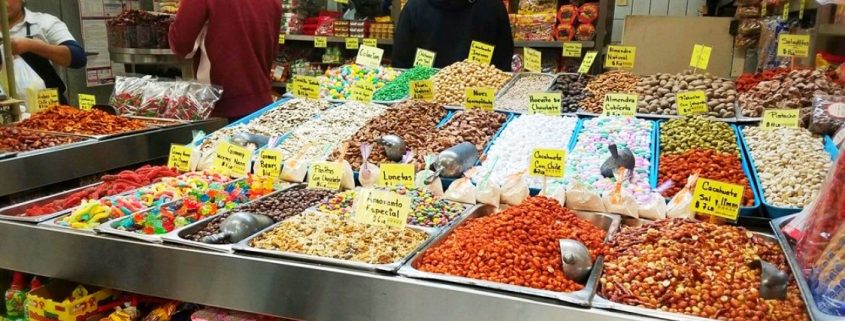Eating L.A. Before it Eats Itself: El Mercadito de Los Angeles sells chile-coated memories

The smell of El Mercadito de Los Angeles is like a sonorous crescendo in a symphony. Frying oil and corn husks perfume the encircling parking lot and alleyways, a tease of the building’s contents, an unwavering flag of identity for the surrounding neighborhood. Within El Mercadito, the neutral notes that were so potent outside are buried under the bouncing scents of roasted meat, melted butter and spice mixes, even leather and straw. Each stall offers its own signature smell in the parade of delicious, overwhelming scents. To some, it’s a foreign olfactory planet. To others, it’s home.
Growing up, the only thing I knew about my paternal grandfather was the packages of chile-dusted mango that he would send twice a year to our doorstep. They glistened with flecks of rock salt and sugar, dusted with a deep red powder that rested on fingers and lips.
Tucked in a thin hallway next to a fleet of paint buckets filled with mole was an array of conspicuously bright red chile mango.
“We have six flavors,” a vendor, Gloria, tells me in Spanish.
She bounces around me and into the small space where the cash register is located. Her small frame, accentuated slightly by a bright red, green and white apron, is almost swallowed by the sweets around her, making her fade into the shelves of Mexican candy. Almost everywhere I look, I am greeted by a warm rainbow of wrappers. As she speaks, Gloria slows her words for me. I was grateful for the gesture, even though I couldn’t find the precise sentence in my blunted Spanish to tell her that.
Gloria points across the hallway to an older woman standing behind a glass counter with more sweets, also adorned in bright red, green and white. “She does the gummy mangoes and worms with our own chile spices.”
I buy a mixed pound of every offering. She throws handfuls of each flavor into a plastic bag, eyeballing each fistful for a moment before adding it to the bag. As she weighs my bag, she picks out one plump gummy worm and tosses it back into the pile. She was off by half an ounce.
“I’ve been working here for a year,” she says. “I needed a job. My whole family needs to work.”
Two men appear next to me, eyeing the chile mango. I move out of the way so she can fill their bags. She talks to them too quickly for me to understand, but I can tell it’s a cordial, familiar conversation.
Most conversations within El Mercadito have that tone. People here know each other, their orders and the vendors. It’s a place for lunch regulars and weekly grocery shoppers. There is no confusion about where this space fits in the community, it is the community.
I ask about the business.
“We used to have a lot more customers,” Gloria says, once the other customers clear. “But people are moving out. It’s too expensive or they’re scared. They don’t want to be deported.”
The mercadito, though bustling with smells, is not bustling with people. It feels stuck, steadfast in heritage, full of the goods that fuel a Mexican community like the one in East Los Angeles. It has importance. It has history. And it may be dying, victim to the tidal waves of gentrification sweeping the neighborhood. El Mercadito is faced with an impossible decision: adapt and lose its culture, or stand resilient and eventually perish.
Gloria smiles after we finish our conversation. She wishes me luck on my writing.
Before I leave, I double back and buy another pound of chile mango.
Christina Tiber is a senior writing about food. Her column, “Eating L.A. Before It Eats Itself,” runs every other week.

